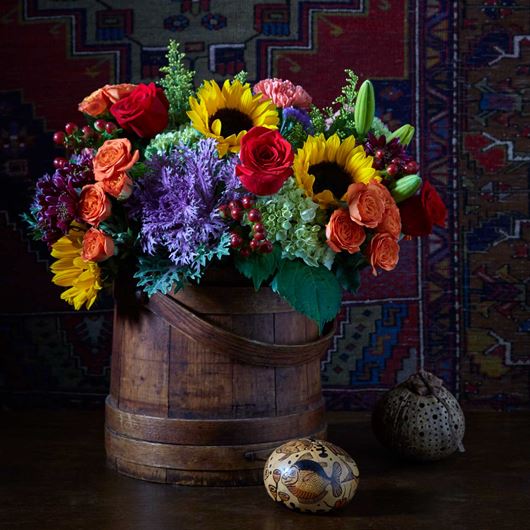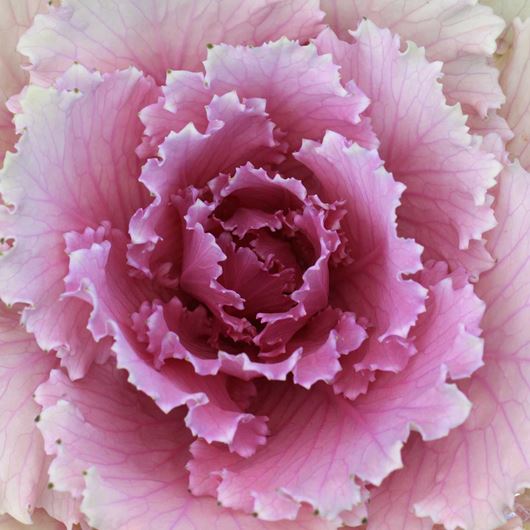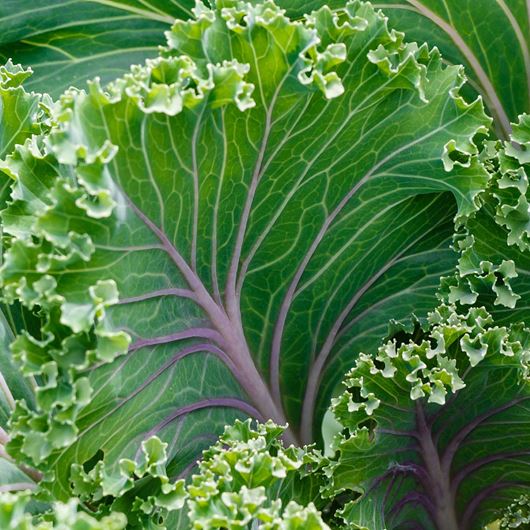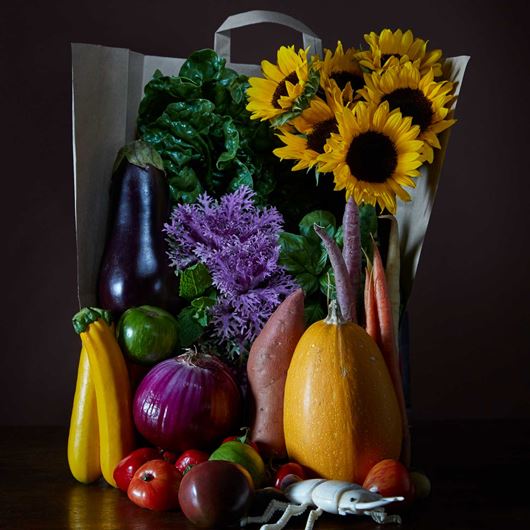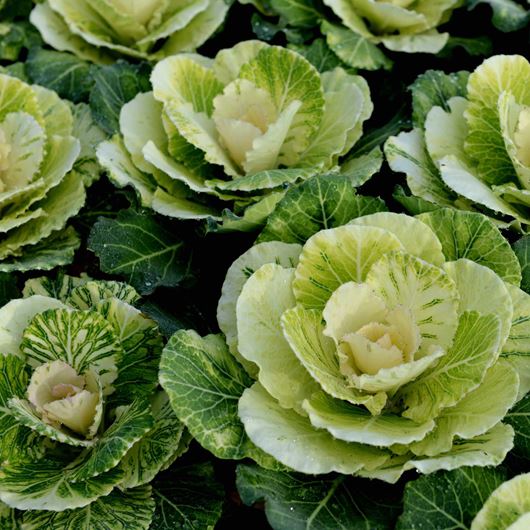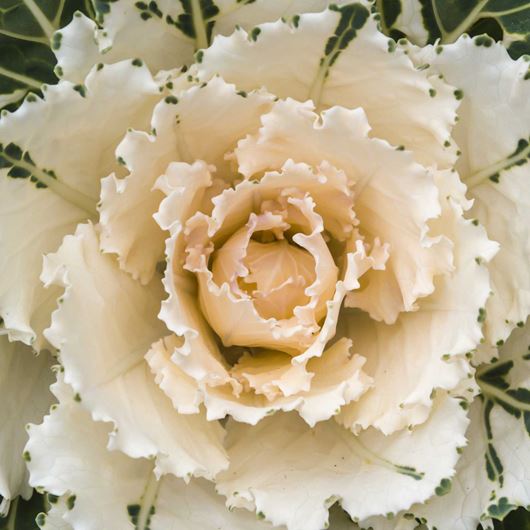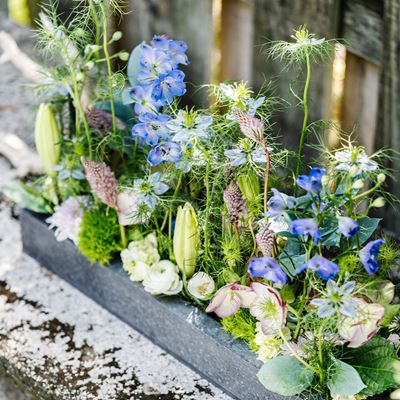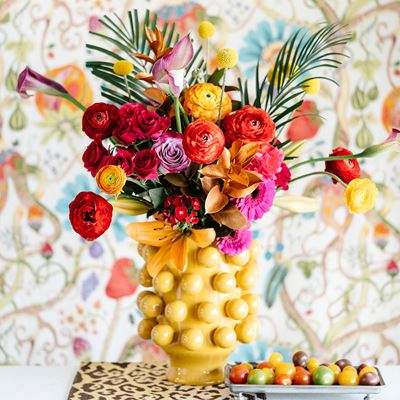Completing our 2023 lookbook series, our sixth and final trend, ATMOSPHERIC, pays homage to our planet's habitats at large. This trending macro view gathers an immersive palette of cool hues, borrowed from the oceans and forests, and pairs it with glowing bright white.
Healthy Food Stuff, Fancy Garden Plantings or Eye-Catching Cut "Flower"—Explore the Split Personality of Ornamental Kale
You may not find this kind of kale (and cabbage) in your produce department. Although ornamental kales and cabbages are relatives of vegetables like the cabbage, broccoli and cauliflower we eat today, these perennial and biennial herbs have been cultivated for their good looks, not so much for their taste.
Natives of Southern and Western Europe and temperate regions of China and Japan, ornamental kales and cabbages have ancient origins that date back at least 4,000 years. Historically, the propagation of wild members of kale and cabbage (in the Brassica oleracea species) began in the Mediterranean, with the Greeks and Romans using the plants primarily as a food source. They were also seen in herbal medicines and made into poultices that could disinfect wounds.
Early travelers and traders later began spreading the plants across all corners of the globe. Once kale reached China, it was a standard ingredient in Chinese cuisine, while in Japan, ornamental foliage types were more widely grown and demanded. By the 17th century, ornamental brassicas became attractive new additions to cottage gardens as bedding plants. When ornamental types finally reached the U.S. from Japan in the 20th century, ornamental kale saw its first debut in seed catalogs in the 1930s. The rest is history.
Today, ornamental kales and cabbages are hybridized by breeders from edible kale types with strong foliar coloration. They are members of the Brassicaceae family, which contains over 3,000 species of cool weather vegetables we know and love today (although regarding the latter, some kids may say otherwise). However, as their common name suggests, ornamental kale and cabbage plants are grown primarily for decorative reasons. In spite of the fact that they are edible, and have been used as garnishes in recipes, their bitter taste and cabbage-like scent leave much to be desired. Nonetheless, the plants’ intensely-colored leaves and texture offer volume and strong visual interest, making them coveted accent plants by designers and home gardeners.
Commercially available cultivars of ornamental kale and cabbage plants typically grow to 30 cm in diameter and 38 cm tall, which explains their staggering volume. Also, unlike their other common name of flowering kale (and cabbage) suggests, these plants don’t produce flowers. The “flowers” are actually the plants’ central leaves, which bloom to reveal rosette-like cores. Generally, their outer leaves will be a darker color than the inner leaves, creating a striking contrasting effect.
Ornamental kale and cabbage plants are all technically types of kale (comprising the Acephala group of B. oleracea). However, in more specific classifications, ornamental kale features deeply serrated or ruffled leaves, while ornamental cabbage features broad, smooth and rounded leaves. Ornamental cabbage leaves also grow in heads (like the cabbage we eat), whereas ornamental kale leaves grow in tight rosettes.
Regardless of type, ornamental kale and cabbage foliage will showcase brilliant colors, which have become plants' claim to fame in the floral industry. These colors are determined exclusively by weather conditions; when exposed to temperatures under 60°F (15°C) for up to four weeks, the leaves' colors form and intensify. This is because frosty weather suppresses chlorophyll production and allows the plant’s underlying tones of white, pink, blue-green, purple and bi-color combinations to develop.
Some popular B. oleracea cultivar series include: 'Chidori' ornamental kale (curly leaf edges with purple, white or magenta leaves), 'Color Up' ornamental cabbage (green outer leaves with white or deep pink cores), 'Osaka' ornamental cabbage (smooth leaves with center of white, pink or red) and 'Peacock' compact hybrids (deeply serrated leaves in white, red or purple). Series like 'Osaka', 'Nagoya', 'Yokohama' and 'Tokyo' naturally were named after their native homeland, as most new ornamental types are coming out of Japan.
Given their extravagant foliage and mesmerizing colors, ornamental kales and cabbages are guaranteed brow-raising additions to contemporary floral designs, especially in the fall and winter. Their durable foliage also offers rich volume, which makes them ideal filler plants for special occasion bouquets and arrangements. And for the professional or novice chefs out there, ornamental kale leaves make a nice garnish, but be warned—the bitter taste isn’t for everyone.
SPECIAL CARE
Select plants with straight, sturdy stems and compact heads showing bright colors. For potted types, their colors will intensify if kept in areas where frosty temperatures (under 60°F / 15°C) can be maintained for three to four weeks. Avoid plants whose leaves show signs of damage or yellowing, which could be disease-related. Most plants also normally emit a cabbage-like scent. To lessen these odors, especially in arrangements, change out the container’s water every two or three days and remove any yellowing leaves.
When processing as a cut flower (not a vegetable), recut the stems about 2.5 cm at an angle (45-degrees). Hydrate them in water mixed with a biocide for at least two hours before storage or use in floral work. Although not required, stems can be recut under running water or in a bowl of clean water. Cutting under water may reduce the risk of air pockets forming at the stems’ base and allows the plants to absorb water right away.
Cut stems can be stored for up to three days at 32–36°F (0–2°C). Make sure to maintain good hydration here, since they may dehydrate quickly when not kept in water.
FUN FACTS
• Endemic to the Meditteranean, Atlantic coasts of Europe and temperate regions of Asia, the origins of Brassica oleracea plants can be traced back over several thousand years. Ancient kale plants have been cultivated for at least 4,000 years, and their propagation expanded from the Mediterranean region to other parts of the globe by early travelers and traders.
• The genus name comes from the Latin word “brassica” meaning cabbage, and the specific epithet means of the garden.
• Although the common name flowering kale (or flowering cabbage) may suggest otherwise, ornamental kale and cabbage plants don’t produce flowers, per say. The “flower” is actually the plant’s central leaves, which bloom to reveal rosette-like shapes.
• Ornamental kales (and cabbages) make up just one of over 3,000 species in the Brassicaceae (mustard) family. They belong to the same genus as many cool season vegetables we eat today, like cabbage, brussel sprouts, broccoli and cauliflower.
• Ornamental kales and cabbages can be eaten, but a word of caution—their leaves are very bitter! Their foliage may also emit an inevitable cabbage-like scent, which may be off-putting for some.
• Historically, B. oleracea plants have been used in herbal medicines. Their leaves can be used to treat heart conditions and made into poultices to disinfect wounds. Additionally, their seeds are natural diuretics and have properties that can expel worm-like parasites.
• Ornamental kales and cabbages’ appearance is completely dependent on Mother Nature. The leaves’ unique colors form and intensify in temperatures below 60°F (15°C). It usually takes between two to four weeks for leaves to develop intense coloration from the start of a plant’s exposure to cooler temperatures.
• Commercially available cultivars are showcased in several colors and usually grouped into one of two categories based on leaf shape: “fringed-leaved cultivars” (plants with ruffled leaves) and “feather-leaved cultivars” (plants with serrated leaves).
• Looking for a beautiful and low maintenance garden plant? Ornamental kale may be the perfect choice for you! These hardy biennials and perennials require minimal care, are long-lasting and can withstand extreme cold weather conditions. They also make excellent compliments to other fall season plants, like Chrysanthemum flowers. Just make sure to keep them well-watered and displayed in areas where temperatures are consistently cool, especially at night.
Ornamental kales (and cabbages) are only one of the Flowers We Love, and we would love to share them all with you. Whether flowers are your passion or your profession, this living encyclopedia will expand your knowledge and entice your imagination. Visit often as we add entries to keep your floral skills growing.
